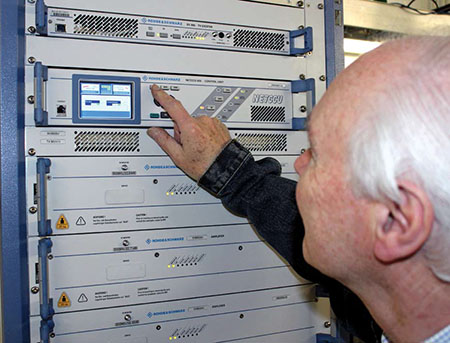Rohde Transitions OTA Broadcasting Repack
FAIRFAX, VA.—The FCC repack has significantly impacted OTA Broadcasting, a six-year old broadcast station group started by computer entrepreneur Michael Dell. During the transition, 10 of our stations will permanently go off the air, while the rest will be repacked.
ALL IN WITH R&S
Fourteen of our stations already have Rohde & Schwarz transmitters in operation. Once we reprogram their frequency agile exciters and replace the mask filters, those stations will be ready for the repack. Thanks to some really talented engineers, adaptive precorrection makes it easy to retune on the new channel, ensuring a relatively straightforward process.
Our other stations with older, non-R&S equipment no longer supported by the manufacturer, will need new transmitters. We are already making plans for OTA stations in Charlotte, N.C. (DMA #22), Seattle and Bellingham, Wash. (DMA #14), Palm Springs, Calif. (DMA #146), and San Jose, Calif. (DMA #6). Every OTA station that needs a transmitter will get a new Rohde & Schwarz.

George Maier checks on the Rohde & Schwarz liquid-cooled transmitter at WYCN in Nashua, N.H.
We’ll go with air-cooled TMU (UHF) and TMV (VHF) models for sites that require 3kW or less, and we’ll consider THU9 (UHF) and THV9 (VHF) models for markets that require more power. The R&S liquid-cooled technology is as good as you’re going to get. They offer multiple levels of redundancy and are extremely quiet in operation.
DOUBLE COVERAGE
Our choice is a testament to the operational simplicity and overall reliability of R&S transmitters. R&S’ depth of diagnostics is second to none—sensors are integrated into every major module of the transmitter, with readouts available locally on the front panel or remotely via web-based GUI. Without any external tools, we can monitor the speed of the cooling pumps and fans on the outside heat exchanger, as well as all key operational parameters in each subsystem; we can practically tell you the outside air temperature based on how hard the pumps are working.
We’re also looking to the future with ATSC 3.0. From an engineering standpoint, ATSC 3.0 requires more power in reserve than current transmitters, because you have to account for a vertical transmission component as well as a horizontal component. That also means your antenna has to be upgraded to support a vertical component. At least we know our new R&S transmitters will be easy to upgrade once the ATSC 3.0 standard is finalized.
George Maier is the engineering manager for OTA Broadcasting, owners of independent TV stations across the U.S. Contact him atgmaier@otabroadcasting.com.
For more information, please visitwww.rohde-schwarz.comor call 888-837-8772.
To follow our online coverage, visit our repack silo,www.tvtechnology.com/repack.
Get the TV Tech Newsletter
The professional video industry's #1 source for news, trends and product and tech information. Sign up below.
